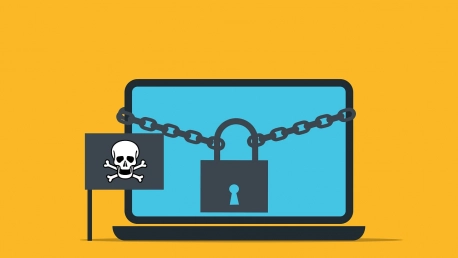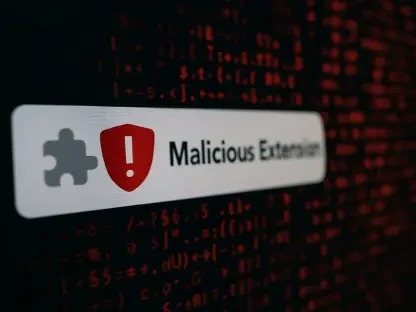The landscape of cybersecurity threats is continually evolving, with ransomware attackers increasingly targeting essential components of enterprise infrastructure. VMware ESXi servers, known for their role in managing virtualized resources, have become a primary focus for these sophisticated attacks. This trend has raised alarms across the cybersecurity community, prompting calls for heightened security measures and proactive strategies to safeguard critical systems. With attackers developing more advanced techniques to exploit vulnerabilities in ESXi environments, the need for robust defensive mechanisms is more urgent than ever. The recent surge in ransomware activities highlights the critical importance of these servers in enterprise operations and exposes the potentially catastrophic consequences of successful breaches.VMware ESXi servers have recently been under siege, particularly from the Play ransomware group. These attackers have honed their tactics to specifically target ESXi environments, exploiting vulnerabilities and bypassing traditional security measures. The attacks have been predominantly focused within the United States, creating significant disruptions in various sectors. By identifying the ESXi environment before executing their malicious activities, Play ransomware is able to unleash maximum damage, often going undetected by conventional tools. The targeted nature of these attacks underscores the extensive reconnaissance and meticulous planning employed by cybercriminals, allowing them to circumvent existing security protocols and inflict substantial harm. These incidents spotlight the broader trend of increasing sophistication in cyber-attacks, requiring enterprises to continuously adapt and enhance their security postures.
Rising Threats to VMware ESXi Servers
The escalating wave of ransomware incidents follows a similar pattern observed in April, wherein the SEXi ransomware group, operating under APT INC, targeted ESXi servers during high-profile attacks like the one on MGM Resorts. These efforts highlight a sustained and systematic approach to compromising VMware ESXi servers, designed to inflict widespread harm and capitalize on the critical role these servers play in enterprise infrastructure. The frequency and intensity of these attacks reflect a calculated strategy to exploit the vulnerabilities within ESXi environments, creating unprecedented challenges for cybersecurity teams. As attackers become more adept at bypassing traditional defenses, the imperative for comprehensive security measures becomes increasingly apparent.The importance of VMware ESXi servers in enterprise infrastructure cannot be overstated. These hypervisors manage multiple virtual machines, and a successful attack can disrupt a significant portion of an organization’s operations. The ensuing chaos can lead to halted services, operational inefficiencies, and severe financial implications. The latency or loss of critical business functions often pushes organizations to the brink, where paying a ransom seems like the only viable option to restore normalcy. This dynamic elevates the stakes for cybersecurity professionals, who must balance the immediate need to mitigate disruptions with the long-term objective of fortifying defenses against future threats. The criticality of ESXi servers in maintaining business continuity accentuates the necessity for heightened vigilance and proactive security strategies.
Double-Extortion and Enhanced Pressures
Double-extortion has become a hallmark of modern ransomware attacks. Groups like Play ransomware capitalize on this method to increase the pressure on their victims. By holding data hostage and threatening its public release, they amplify the stakes, forcing organizations to consider the repercussions on their reputation and regulatory compliance. This tactic has proven effective in driving ransom payments, as the prospect of sensitive information being exposed often outweighs the cost of recovery efforts. The dual-threat approach of encrypting data and exfiltrating sensitive information significantly escalates the impact of an attack, exerting immense pressure on victim organizations to comply with ransom demands. This multifaceted strategy not only magnifies the immediate damage but also imposes long-term ramifications on an organization’s integrity and credibility.The phenomenon of double-extortion is not isolated to Play ransomware. It mirrors the strategies employed by other groups, as seen with the SEXi ransomware operation. These parallel approaches underline a broader trend in ransomware tactics, where attackers leverage the dual threats of encryption and data exposure to maximize their leverage. This convergence of methods signifies a paradigm shift in the ransomware landscape, necessitating adaptive and robust defensive measures. The growing prevalence of double-extortion tactics highlights the evolving nature of cyber threats, demanding that organizations adopt a comprehensive and layered approach to cybersecurity. Proactive measures, such as advanced threat detection and real-time monitoring, are crucial in countering the sophisticated tactics employed by modern ransomware groups.
Strengthening Security Postures
In response to these targeted attacks, security experts advocate for comprehensive measures to fortify defenses against ransomware. Key recommendations include rigorous network segmentation, which limits lateral movement within the network, making it harder for attackers to propagate their malfeasance. Strong access controls are also crucial, ensuring that only authorized individuals have access to critical systems and data. These proactive strategies are instrumental in minimizing the attack surface and preventing cybercriminals from gaining a foothold within enterprise networks. The implementation of stringent access controls and segregation of network resources enhances the overall security posture, offering a robust defense against the sophisticated techniques employed by ransomware attackers.Regular audits for vulnerabilities and security hardening practices, such as disabling unnecessary services and implementing robust encryption protocols, are fundamental in safeguarding virtualized environments. Patrick Tiquet, a prominent cybersecurity authority, emphasizes the importance of incident response plans that are both robust and agile. Comprehensive backup strategies are also critical, enabling organizations to recover data without succumbing to ransom demands. The integration of these measures into a holistic security framework ensures a multi-layered defense, capable of withstanding the complex and evolving threats posed by ransomware groups. By adopting a proactive and resilient security stance, organizations can mitigate the risks associated with ESXi environments and safeguard their critical infrastructure from cyber-attacks.
Increased Risks with Cloud and Virtualized Environments
The proliferation of cloud and virtualized environments has inadvertently expanded the attack surface for cybercriminals. As organizations move towards these platforms for operational efficiency, misconfigurations and security lapses become exploitable vulnerabilities. The rise in Linux malware, often facilitated by platform-independent frameworks like GoLang, offers attackers versatile tools to target multiple operating systems within these environments. The growing complexity of cloud and virtualized infrastructures introduces new challenges in maintaining robust security protocols, necessitating a vigilant and proactive approach to cyber defense. The dynamic nature of these environments requires continuous monitoring and regular updates to ensure that security measures remain effective against emerging threats.Patrick Tiquet highlights the popularity of cloud computing as a double-edged sword. While it brings significant benefits, it also presents increased opportunities for attackers, who exploit shared resources and complex configurations. This growing threat landscape necessitates heightened vigilance and adherence to security best practices, ensuring that the benefits of virtualization do not come at the expense of security. Implementing strong access controls, regular security audits, and effective incident response plans are essential in mitigating the risks associated with cloud and virtualized environments. The adoption of a robust security framework that encompasses these measures is crucial in safeguarding sensitive data and ensuring the integrity of virtualized infrastructure.
Expert Insights and Actionable Strategies
The landscape of cybersecurity threats is constantly shifting, with ransomware attackers increasingly aiming at critical components of enterprise infrastructure. VMware ESXi servers, crucial for managing virtualized resources, have become a primary target in these sophisticated assaults. This growing trend has sounded alarms across the cybersecurity sector, prompting urgent calls for enhanced security measures and proactive strategies to protect vital systems. As attackers develop more advanced methods to exploit ESXi vulnerabilities, the necessity for robust defensive mechanisms becomes ever more critical. The recent surge in ransomware activities underscores the pivotal role these servers play in enterprise operations, exposing the potentially disastrous consequences of successful breaches.Recently, VMware ESXi servers have faced aggressive attacks, notably from the Play ransomware group. This group has refined their tactics to specifically target ESXi environments by exploiting vulnerabilities and bypassing traditional security measures. These attacks predominantly affect sectors within the United States, causing significant disruptions. By identifying the ESXi environment before executing malicious activities, Play ransomware maximizes damage, often going undetected by conventional tools. These incidents highlight the sophisticated reconnaissance and meticulous planning by cybercriminals, necessitating continuous adaptation and enhancement of enterprise security measures.








